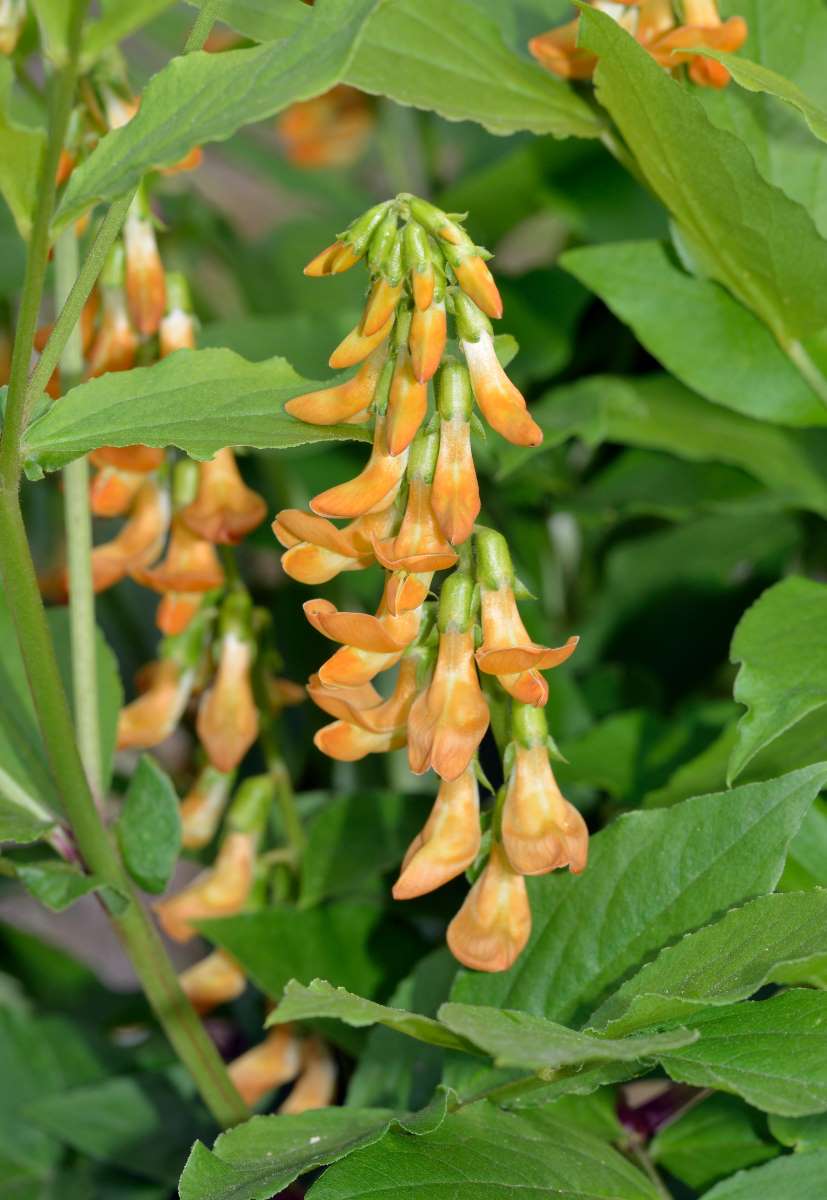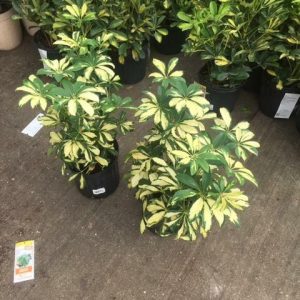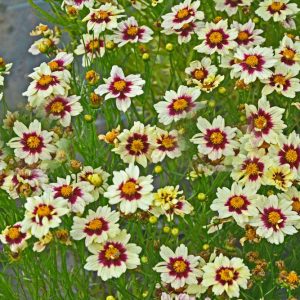Description
Lathyrus –
There are about 150 species of annual and herbaceous or evergreen perennials in this genus. They occur in sunny, sandy or pebbly banks, grassy slopes, wasteland, or open woodland in Northern temperate regions, Northern and Eastern Africa, and temperate South America. They are grown for their showy, pea-like, often scented flowers, in many colors held either single or in racemes followed by flat seed pods. Stems are usually winged, and bear alternate, pinnate leaves. Many are climber (with tendrils), others are clump forming. The climbers are useful for growing through shrubs or over a bank. L. odoratus is suitable for a trellis or arch, or an annual border for cut flowers. Clump forming species and cultivars are suitable for a rock garden, woodland garden, or herbaceous border. Seeds may cause mild stomach upset if ingested.
Grow in fertile, humus rich, well drained soil in full sun or light dappled shade. Climbers need support. Deadhead regularly. Divide perennial species in spring.
Prone to slugs and snails, pythium root rot, powdery mildew, rust, gray mold, and various leaf spots.
L. aureus – L. luteus of gardens – L. vernus var aurantiacus – Orobus aureus – This clump forming herbaceous perennial from the Ukraine, the Caucasus and Northern Turkey grows 24″ tall and half as wide. From upright, un-winged stems, it carries dark green leaves divided into 3-5 pairs of elliptic leaflets, to 2″ long. From late spring to early summer it bears one sided racemes of 8-25 yellow orange flowers, to 3/4″ long.
Zones 5-9





